The Second World War was a long, hard and messy slog. Everyone was directly affected by it, so much so, that I’d never be able to fully cover the War locally in any real depth. There are, though, some intriguing stories and incidents worth reiterating here.
The Mystery U-boat
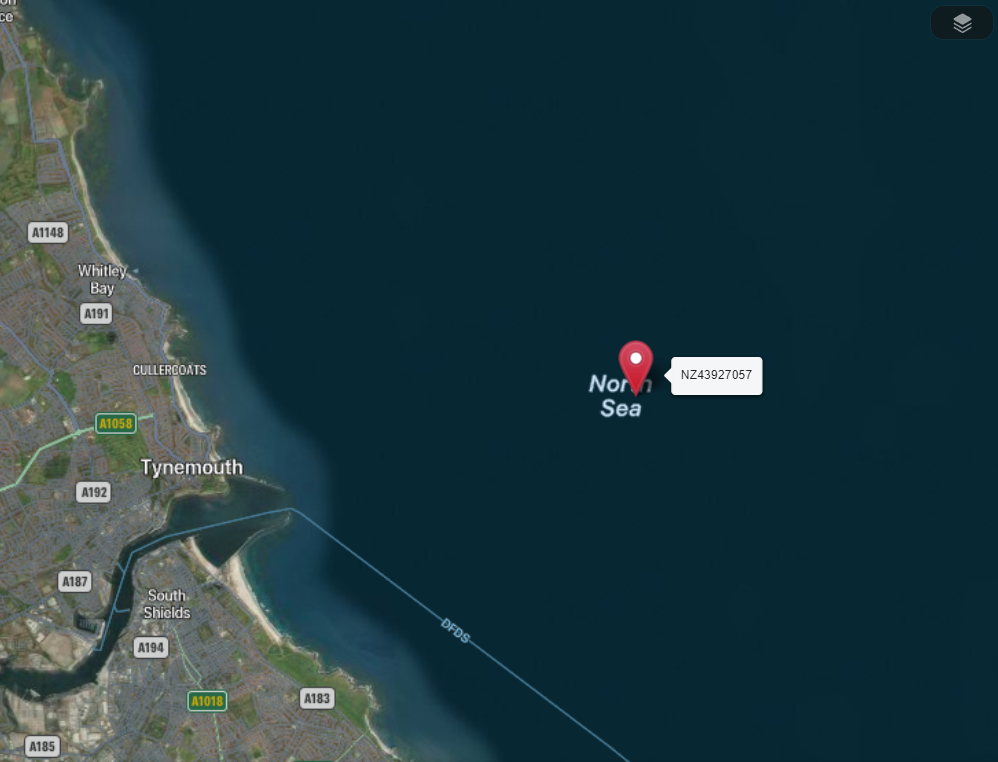
Out there, just over 3 miles from the North Pier, is a wreck of a German submarine. Nothing is known about it, not even the date of its sinking. But its job probably was laying the magnetic mines that were so greatly feared during the phoney war period in the very early months of World War II.
This mystery Tynemouth U-boat lying at 55°01’40″N 1°18’52″W is probably the reason why the older generation called the small Pebble Beach on the north side of the Pier, the ‘Submarine Beach’, as presumably well into the 1960s bits of it were still washing up on the Castle rocks.
There are also a lot of World War I wrecks in this area, including one ship torpedoed by U-boat 22, an infamous submarine that we’ll come to next, as well as many armed minesweeping trawlers that were bombed and sunk, particularly in 1916. There’s also another mystery U-boat close to the shore at Seaham that was discovered in 2014 and was apparently sunk by the RAF.
Sunken Ships off Tynemouth & Whitley Bay
240 mines were laid off Tynemouth by a force of Kriegsmarine destroyers on 13th December 1939, and another 240 were laid in the Tyne approaches a month later.
Also on 13th December, the minesweeping trawler WILLIAM HALLET, hit a mine and sank near Whitley Bay with the loss of 8 lives.
On the following day, not far from Tynemouth, the trawler JAMES LUNDFORD detonated a mine that had been retrieved from the water. She sank with the loss if 17 crewmen. The tanker INVERLANE also hit a mine that ripped the hull open and killed 4 men, after which the tanker burned for 5 days near the entrance to the Tyne.
The next day, 15th December 1939, 4 ships hit mines and sank off the Tyne. They were:
- STRINDHEIM (Norway) – 11 lives
- ROSA (Belgium) – 1 life
- RAGNI (Norway) – 19 lives
- FLOOD (Norway) – 21 lives
Then, on 16th December, two armed trawlers, SEDGEFLY and EVELINA hit mines and sank with 16 and 9 lives lost respectively.
Six other World War II wrecks lie around St Mary’s Island, mainly from 9 mines laid by U-boat 22 on 18th December. They are:
- MARS (Sweden) – 20.12.39 – 2 lives
- DOLPHIN, ex HMS PANDORA – 23.12.39 – no casualties
- LOCH DOON – 25.12.39 – 16 lives
- HANNE (Denmark) – 28.12.39 – 15 lives
- FERRYHILL – 21.1.40 – 11 lives
- ESTON – 28.1.40 – 15 lives
After these and many other early strikes along the North East Coast, the U-boats then turned their attention to the vast and safer waters of the Atlantic where they operated in wolfpacks.
Defending the Harbour
On the Haven there is a concrete bunker with small iron doors that always held great fascination for me as a child, as the entrance to some kind of secret tunnel below the Priory.
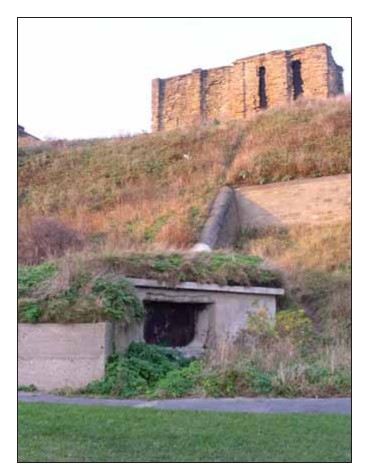
In fact this was a World War I searchlight emplacement so that the guns on both the Priory and the Spanish Battery could be trained on the pier entrance. The resumption of hostilities in World War II required another searchlight to be placed above the pier to complement the existing one on the Spanish Battery.
The ability to quickly and easily pound enemy vessels entering the harbour, especially at night, must have been a thrilling prospect for the gunners stationed on the two headlands, despite the fact they were never actually called on to open fire. I’m happy to be corrected on this, but I can only find one instance of anti-aircraft guns being fired in anger, and that was at South Shields on 11th January 1940.
Speculative Defences
It was rumoured that a plan was devised to attach enormous iron gates to the piers in order to lock the harbour. How true this is, I do not know. The distance between the two lighthouses is 360 yards, and though probably doable, they would be easy to blow up. It seems the plan was not considered further.
There was also a plan to scuttle a blockship at the Narrows, which would’ve presented a serious headache for any invading Germans. This, of course, would have been a last resort given the importance of the river and the need to take such desperate action fortunately never came close.
Bombs Dropped on Shields
North Shields took quite a hit from German bombing, with the standout crime being a direct hit on the public air raid shelter at Wilkinson’s Lemonade Factory on 3rd May 1941, which caused the entire ground floor to fall through into the basement. Wilkinson’s was where the East End Youth Club now stands on George Street.
In Tynemouth borough, 225 lives were lost from 310 bombs dropped on 31 occasions, including 107 lives at Wilkinson’s.
Looking at the bomb map of North Shields curated on the excellent site northshields173.org, on some of these occasions you can literally see the line of flight the planes took as they dropped their bombs. For instance, on an air raid that killed 3 people on 2nd October 1941, one sequence of bombs began at Peggy’s Hole at the eastern end of the of the Western Quay, followed by one up the bank at the Old High Light, then just beyond at Bird Street, then one next to the train tracks at the top of Hudson Street, and finally one that destroyed a row of houses on Grey Street, the impact of which can be clearly seen today.
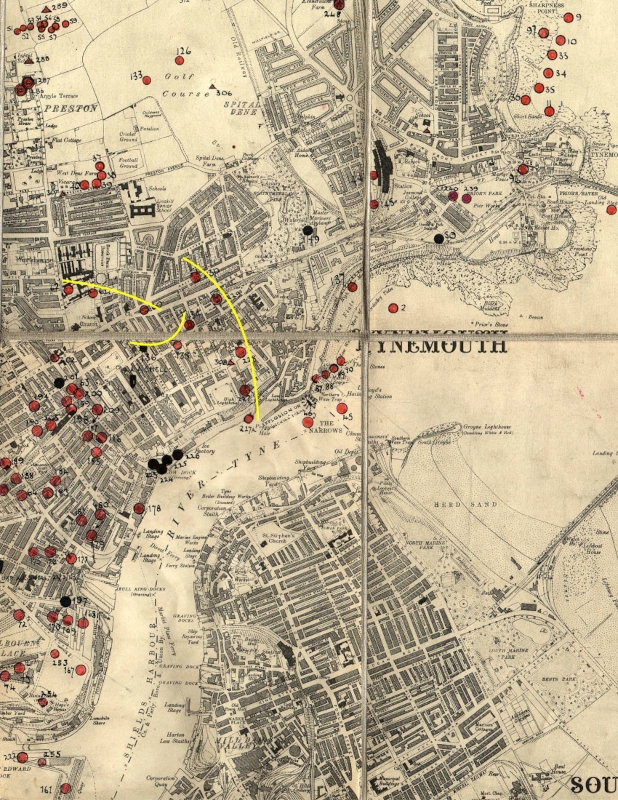
Bombs 87,88,89,90 show the Germans felt Clifford’s Fort an important target, even though the land had ceased to be in military use since well before the War.
In addition to these horrors, there was a large amount of damage caused at the Fish Quay on 2nd December 1941 when a depth charge from a naval vessel exploded by accident. The was caused by French sailors smoking on the deck of their ship while it was being refuelled.
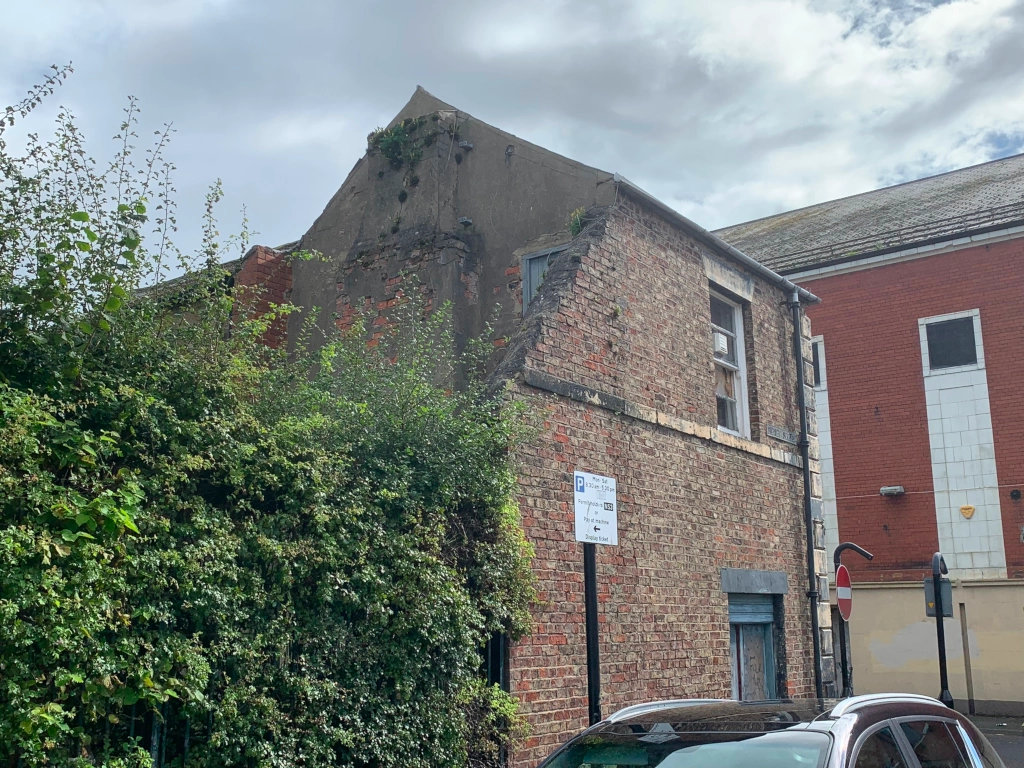
Tommy Brown (George Medal)
Tommy Brown was a North Shields hero who was only 16 in 1942 and serving as a canteen assistant aboard HMS PETARD, when he boarded the sinking U-boat U-559 off the coast of Egypt and retrieved its cryptography settings sheets. These were then sent to Bletchley Park so the Enigma code could be cracked. This act of extreme bravery provided a genuine breakthrough and meant that the wolfpacks were rendered completely ineffective, ultimately bringing the War to a far earlier end.
The really sad thing about Tommy Brown, though, is that he died so young, so tragically and because of an incident while at home on leave in 1945, when he tried to save his sister from a house fire in the Ridges and died as a result.
It’s yet another instance of the deep misfortune and loss of life that accompanied the Second World War.
Loss of life during the War was so often sickening and unnecessary. That’s why the War should never be glorified, but at the same time, it should serve as a sobering reminder now and for future generations, that people really did die for us.
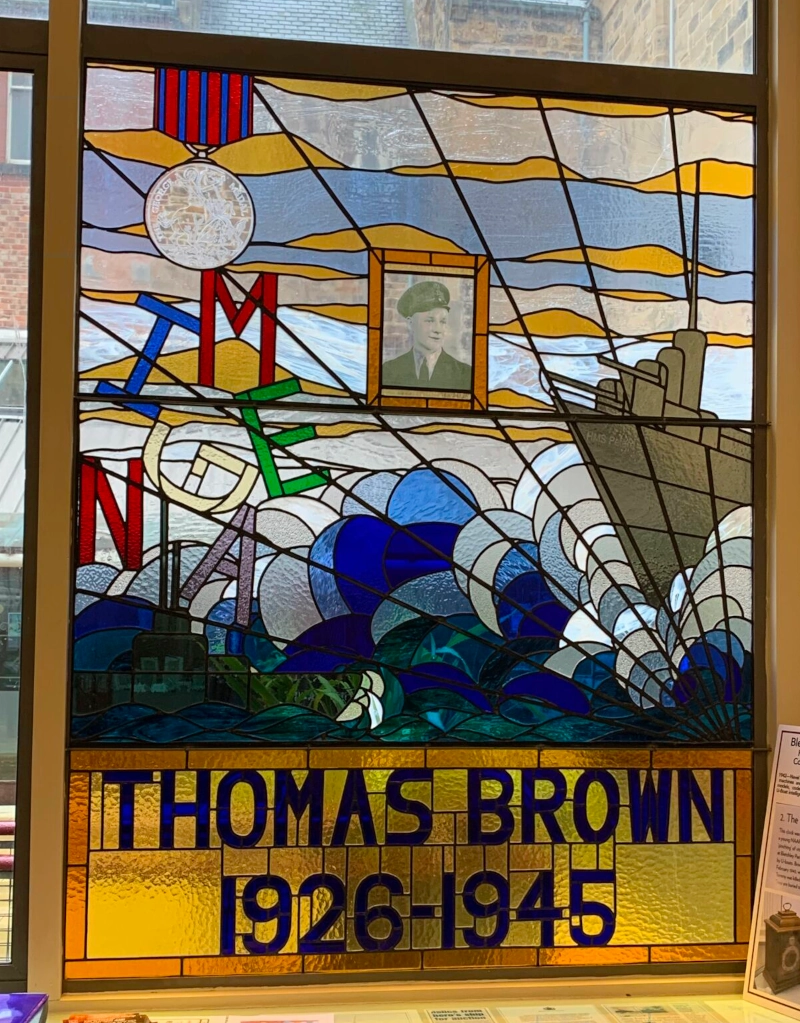
Do you know any interesting stories or facts about the War in the area? Comment below and share them with us.
References
- Mystery U-boat: https://www.twsitelines.info/SMR/13948
- North East War Diary: https://ne-diary.genuki.uk/Inc/ISeq_02.html
- U-boat 22 & U-boat 61: https://northeastatwar.co.uk/2019/03/17/terror-off-the-tyne-i-a-tale-of-two-u-boats/ Terror off the Tyne a Tale of Two U-Boats — P Armstrong (2019) https://uboat.net/boats/patrols/patrol_437.html https://uboat.net/forums/read.php?3,72744,72857
- Coastal Defences: A Guide to the Archaeology of the 20th Century Defence Sites of Tyne and Wear (2008) By R. Whaley, J. Morrison, D. Heslop
- Details of every bombing raid in Tynemouth borough: https://northshields173.org Thank you to Adrian Naughton for identifying this to me.
- Depth charge accident: https://northshields173.org/02-12-1941/
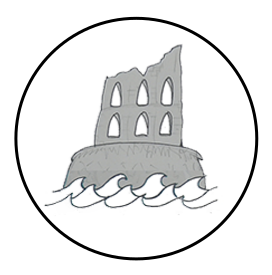




Someone on the Penbal Facebook group has commented that they have dived at the site of the Tynemouth Uboat and have seen the wreck: World War II and Tynemouth Borough